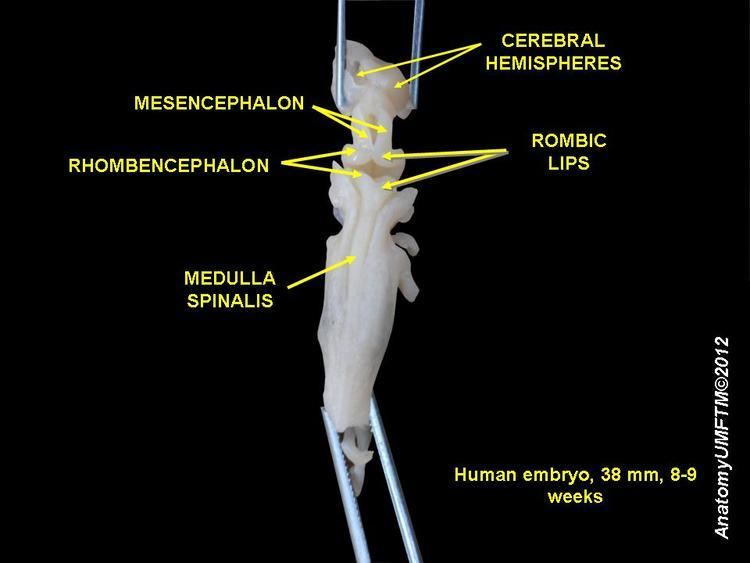NeuroNames hier-534 Dorlands/Elsevier m_12/12529123 | NeuroLex ID Metencephalon | |
 | ||
MeSH A08.186.211.132.810.428 | ||
The rhombic lip is a posterior section of the developing metencephalon which can be recognized transiently within the vertebrate embryo. It extends posteriorly from the roof of the fourth ventricle to dorsal neuroepithelial cells. The rhombic lip can be divided into eight structural units based on rhombomeres 1-8 (r1-r8), which can be recognized at early stages of hindbrain development. Producing granule cells and five brainstem nuclei, the rhombic lip plays an important role in developing a complex cerebellar neural system.
History
Through studies of human embryos performed in the late 1890s, Swiss anatomist Wilhelm His identified a portion of hindbrain neuroepithelium that was distinct from the rest of the hindbrain neuroepithelium in its morphology, sustained chromosomal division into late stages of embryogenesis, and deployment of streams of neurons through the hindbrain periphery. His named this zone "rautenlippe," or rhombic lip, because it seemed to emanate from the rhomboid-shaped opening of the fourth ventricle, much like the shape of a mouth. His proposed that the rhombic lip held the precerebellar precursors that would migrate ventrally to populate the pontine and olivary nuclei, but the methodologies available at the time limited the amount of evidence he could gather. The first real evidence that precerebellar neurons had a dorsal origin was obtained in the 1990s through the use of chick-quail chimeras, a technique in which portions of quail hindbrain neuroepithelium are grafted into chick embryos in ovo. Tracking the ventral migration of the quail daughter cells confirmed His' theory.
